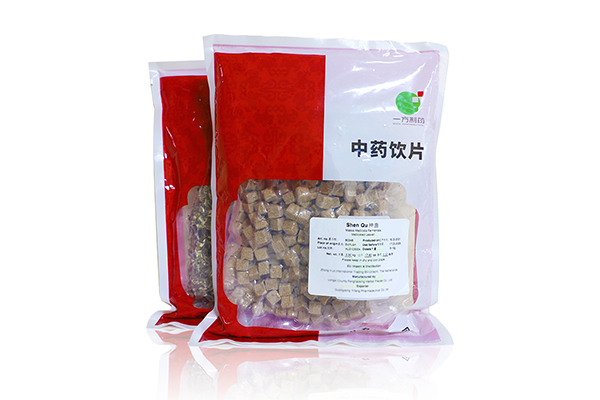Chinese herbal medicine, with a history stretching back thousands of years, plays a vital role in Traditional Chinese Medicine (TCM). One of the most distinctive aspects of TCM is the use of Chinese herbal slices — plant, animal, or mineral substances that have been cleaned, cut, and processed for clinical use. For newcomers, identifying these herbal slices can be both fascinating and overwhelming due to their diverse appearance, texture, and applications.
This guide aims to help beginners understand how to identify commonly used Chinese herbal slices, their characteristics, and their practical uses. We'll also explore common applications, storage solutions, and tips for sourcing quality herbs.
What Are Chinese Herbal Slices?
Chinese herbal slices are the processed forms of raw herbs used in traditional medicine. Processing can include cutting, steaming, roasting, frying with honey or wine, and even calcining, depending on the herb's therapeutic purpose. These slices are typically used in decoctions, powders, or granules.
They are not just raw herbs but standardized, purified, and often optimized for medicinal use. This makes them easier to weigh, package, and prescribe. Herbal slice processing technology is essential in maintaining the efficacy and safety of the medicine.
Why Identifying Herbal Slices Matters?
Identifying Chinese herbal slices is crucial for:
● Ensuring proper clinical efficacy
● Avoiding misuse or incorrect dosage
● Preventing contamination or adulteration
● Complying with safety regulations in TCM production
Correct identification is essential for practitioners and suppliers in the Chinese herbal medicine industry.
Tools and Techniques for Identification
1. Visual Inspection
● Shape and size: Slices may be round, square, strip-like, or irregular.
● Color: Indicates processing method and freshness.
● Texture: Dry herbs should not be overly brittle or soft.
● Markings: Look for veins, dots, or surface texture for clues.
2. Smell
Many herbs have distinct odors, which can hint at their authenticity and age.
3. Taste
Some herbs (especially in teaching contexts) may be tasted for bitterness, sweetness, or pungency — a traditional but advanced skill.
4. Reference Charts or Herb Identification Apps
Today, professionals often use digital Chinese herbal identification tools that include photo recognition and AI-driven classification — a growing trend in TCM tech solutions.
Common Chinese Herbal Slices and Their Features
Below are widely used herbs, their identifying features, and uses.
1. Dang Shen (Codonopsis Root)
Appearance: Cylindrical slices, pale yellow, flexible
Taste: Sweet and slightly bitter
Use: Boosts Qi, strengthens the spleen and lungs
2. Huang Qi (Astragalus Root)
Appearance: Long, flat slices, yellow-white with fibrous texture
Use: Strengthens the immune system, supports energy and vitality
Application: Used in immune-boosting herbal formulas
3. Bai Zhu (Atractylodes Rhizome)
Appearance: Thick slices, white to light brown, powdery surface
Smell: Aromatic and earthy
Use: Supports digestion, dries dampness
4. Chuan Xiong (Ligusticum Wallichii Rhizome)
Appearance: Irregular, brown-black slices
Use: Promotes blood circulation, relieves pain
Popular in: Herbal pain relief formulas
5. Gan Cao (Licorice Root)
Appearance: Round, yellowish slices with ring patterns
Taste: Sweet
Use: Harmonizes other herbs, soothes a cough
6. Shu Di Huang (Prepared Rehmannia Root)
Appearance: Black, glossy, sticky slices
Processing: Steamed with wine or black beans
Use: Nourishes blood, supports kidney essence
7. Fu Ling (Poria)
Appearance: White, porous cubes or slices
Texture: Lightweight and chalky
Use: Promotes urination, strengthens the spleen
8. Yin Chen Hao (Artemisia Capillaris)
Appearance: Grey-green leafy parts, chopped
Use: Clears heat, treats jaundice
Popular in: Liver detox herbal solutions
9. Jin Yin Hua (Honeysuckle Flower)
Appearance: Thin, tubular, yellow-white
Use: Clears heat and toxins, used in herbal anti-inflammatory blends
10. Ban Lan Gen (Isatis Root)
Appearance: Thick, irregular slices, gray-brown
Use: Clears heat, used for antiviral herbal formulas
Key Tips for Beginners in Herbal Slice Identification
1. Study With Physical Samples
Handling real samples helps develop intuition for shape, texture, and weight — much more effective than photos alone.
2. Visit a Reputable TCM Pharmacy
Seeing how experienced practitioners weigh and pack herbs teaches practical skills.
3. Reference Official Pharmacopoeias
Official Pharmacopoeias provide standardized descriptions, images, and processing methods — invaluable for students and suppliers.
4. Understand Processing Terminology
Terms like "Sheng" (raw), "Zhi" (processed), or "Chao" (stir-fried) describe how an herb has been treated. For instance:
Sheng Di Huang (raw Rehmannia) differs in color, texture, and use from Shu Di Huang (prepared Rehmannia).
Storage and Packaging Best Practices
Proper storage ensures the longevity and efficacy of herbal slices:
● Cool, dry, and dark environments
● Vacuum-sealed herbal slice packaging
● Use moisture-proof packaging solutions to prevent mold
● Store away from strong-smelling items
Advanced herbal factories use automated herb packaging machines, ensuring cleanliness and compliance with GMP standards for herbal medicine.
Where to Source Quality Herbal Slices?
1. Certified Herbal Medicine Manufacturers
Look for TCM manufacturers with GMP certification, such as those listed in the China TCM export compliance directory.
2. Herbal Wholesale Platforms
Many professional buyers turn to herbal medicine wholesale platforms that offer:
● Ingredient traceability
● COA (Certificate of Analysis)
● Batch-level quality control
3. Online Bulk Herbal Suppliers
B2B platforms like Alibaba or specialized herbal e-commerce sites allow small clinics and distributors to access bulk Chinese herbal slices.
Conclusion: A Practical Start for TCM Beginners
Identifying Chinese herbal slices is a foundational skill in Traditional Chinese Medicine. By learning to observe their appearance, texture, and processing features, beginners can distinguish common herbs like Codonopsis, Astragalus, and Licorice with confidence.
As the herbal industry modernizes, tools like digital identification, GMP-certified sourcing, and bulk herbal platforms make it easier to ensure quality and authenticity. With consistent study and hands-on experience, you can build a solid understanding of TCM herbs and apply this knowledge safely and effectively.

